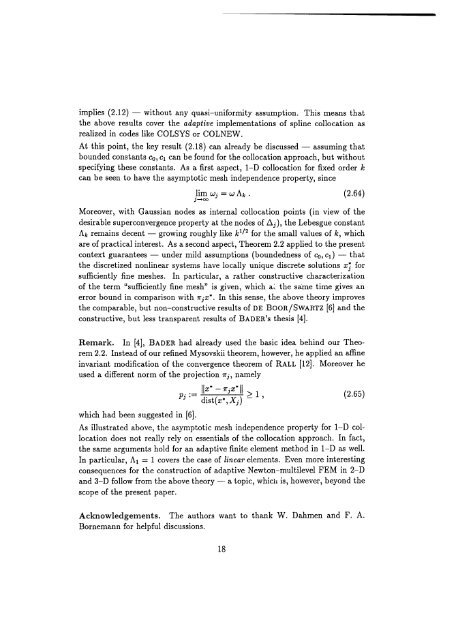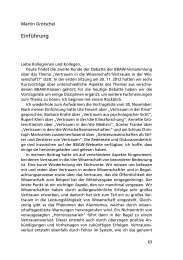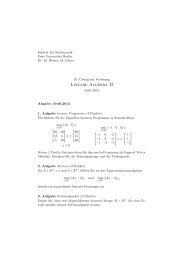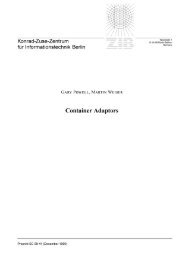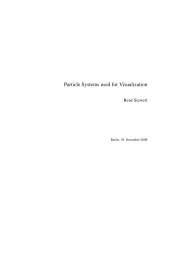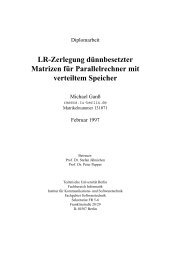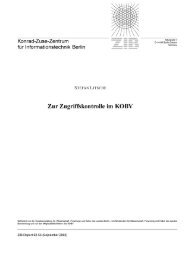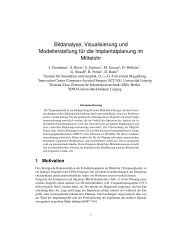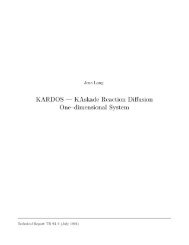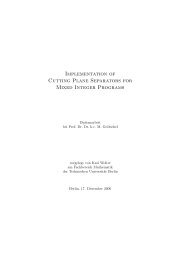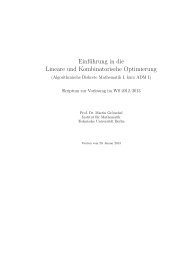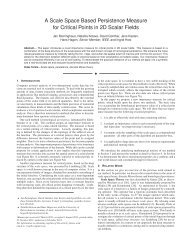SC-90-09.pdf - ZIB
SC-90-09.pdf - ZIB
SC-90-09.pdf - ZIB
You also want an ePaper? Increase the reach of your titles
YUMPU automatically turns print PDFs into web optimized ePapers that Google loves.
implies (2.12) — without any quasi-uniformity assumption. This means that<br />
the above results cover the adaptive implementations of spline collocation as<br />
realized in codes like COLSYS or COLNEW.<br />
At this point, the key result (2.18) can already be discussed — assuming that<br />
bounded constants CQ, C\ can be found for the collocation approach, but without<br />
specifying these constants. As a first aspect, 1-D collocation for fixed order k<br />
can be seen to have the asymptotic mesh independence property, since<br />
lim ojj = u> A*, . (2.64)<br />
j—>-oo<br />
Moreover, with Gaussian nodes as internal collocation points (in view of the<br />
desirable superconvergence property at the nodes of Aj), the Lebesgue constant<br />
Afc remains decent — growing roughly like k x l 2 for the small values of k, which<br />
are of practical interest. As a second aspect, Theorem 2.2 applied to the present<br />
context guarantees — under mild assumptions (boundedness of Co,Ci) — that<br />
the discretized nonlinear systems have locally unique discrete solutions x*j for<br />
sufficiently fine meshes. In particular, a rather constructive characterization<br />
of the term "sufficiently fine mesh" is given, which ai. the same time gives an<br />
error bound in comparison with TTJX*. In this sense, the above theory improves<br />
the comparable, but non-constructive results of DE BOOR/SWARTZ [6] and the<br />
constructive, but less transparent results of BADER's thesis [4].<br />
Remark. In [4], BADER had already used the basic idea behind our Theorem<br />
2.2. Instead of our refined Mysovskii theorem, however, he applied an affine<br />
invariant modification of the convergence theorem of RALL [12]. Moreover he<br />
used a different norm of the projection TTJ, namely<br />
p. :== »*' -^'11 > 1 , (2.65)<br />
F]<br />
dist(x*,X,) _<br />
v<br />
'<br />
'<br />
which had been suggested in [6].<br />
As illustrated above, the asymptotic mesh independence property for 1-D collocation<br />
does not really rely on essentials of the collocation approach. In fact,<br />
the same arguments hold for an adaptive finite element method in 1-D as well.<br />
In particular, Ai = 1 covers the case of linear elements. Even more interesting<br />
consequences for the construction of adaptive Newton-multilevel FEM in 2-D<br />
and 3-D follow from the above theory — a topic, which is, however, beyond the<br />
scope of the present paper.<br />
Acknowledgements. The authors want to thank W. Dahmen and F. A.<br />
Bornemann for helpful discussions.<br />
18


